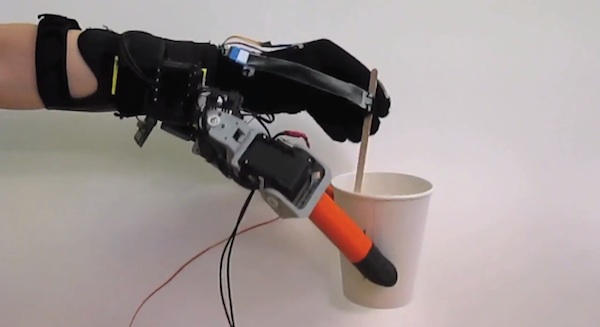Science & Tech
New Robotic Device Adds Two Extra Fingers to the Human Hand

A robotic “glove” that adds two extra fingers to a human hand was designed by researchers from the University of MIT.
Fingers of the robotic device are moving synchronously with the natural ones, without requiring the user to give commands, thereby significantly enhancing the ability of handling the objects.
“This is a completely intuitive and natural way to move your robotic fingers. You do not need to command the robot, but simply move your fingers naturally. Then the robotic fingers react and assist your fingers,” says Professor Harry Asada of the Department of Mechanical Engineering at MIT, who led the project.
The MIT researchers, who presented their invention at the Robotics: Science and Systems conference in Berkeley, California, said that their device could help people who are amputees, have limited dexterity, or those who want to lift heavy objects.
The robotic fingers are using software algorithms that enable them to move in sync with the natural fingers. The two artificial fingers are located at both ends of the hand, one next to the thumb, and the other next to the small finger.
The control algorithms of the device ‘train’ the robotic fingers to mimic the movement of human fingers. The more you are wearing the “7 Finger Robot“, the faster it ‘learns’ to better grasp and manipulate the objects, depending on your preferences and peculiarities and adapting to different circumstances.
In the future, when the necessary improvements are implemented, the device will be smaller and lightweight. The robotic fingers will be one third of the current size and will be embedded in a bracelet or watch, from which they will come out when needed and then put back into place.
The researchers hope that it will be a matter of time and habit until people feel robotic fingers as natural extensions of their bodies. “Like a tool you have been using for a long time, you feel the robot as an extension of your hand,” said Prof Asada.
ABOUT THE AUTHOR
Anna LeMind is the owner and lead editor of the website Learning-mind.com, and a staff writer for The Mind Unleashed.
Typos, corrections and/or news tips? Email us at Contact@TheMindUnleashed.com
